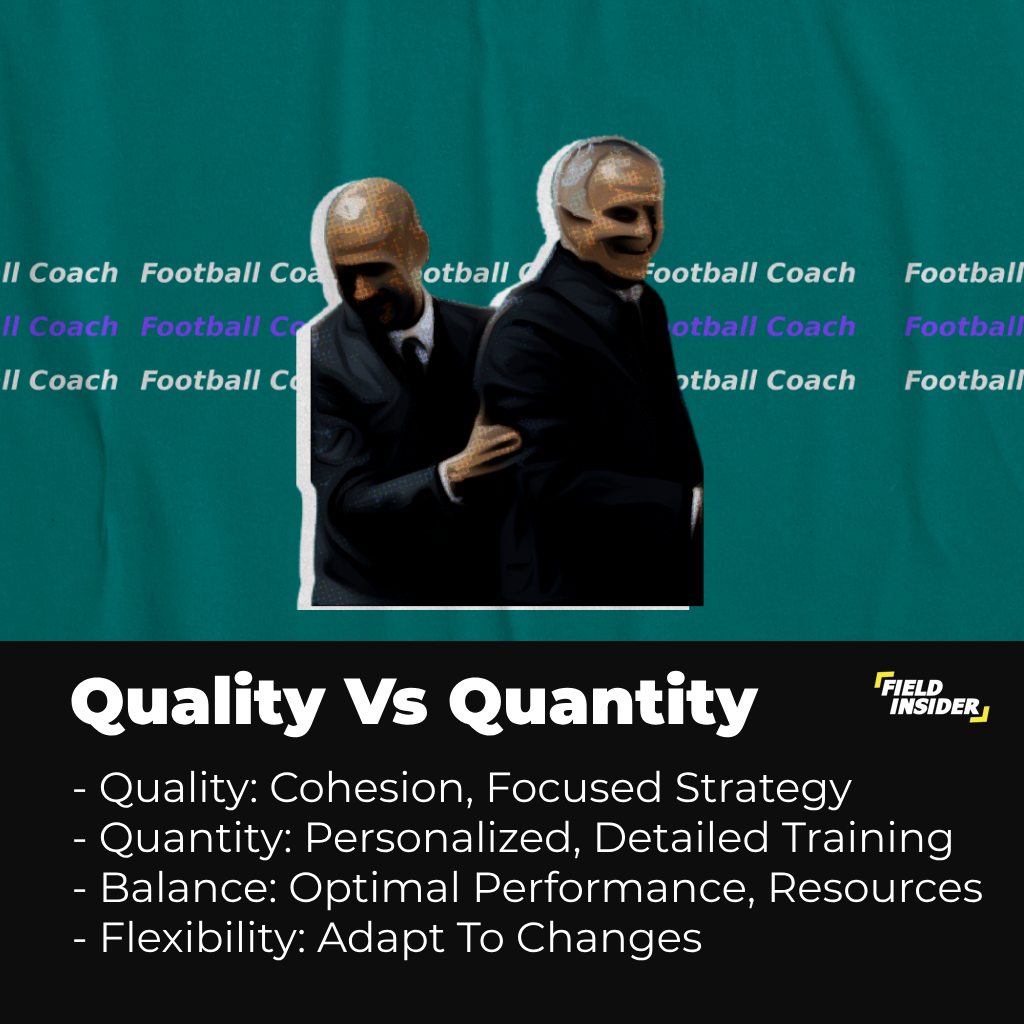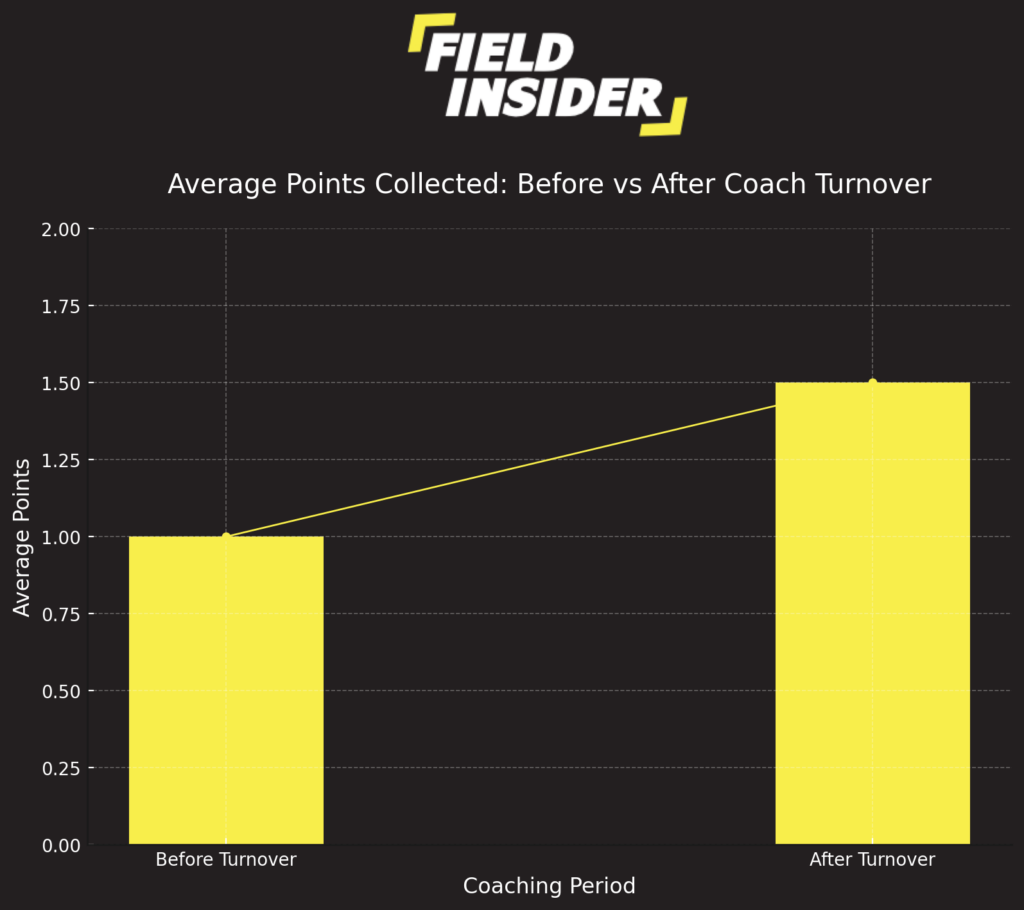How Many Football Coaches Should A Team Have?
Football coaches are the architects behind the scenes, shaping the success and direction of a team. They blend strategy, skill development, and motivation to forge winning teams and nurture individual talent. In the complex world of football, the number and expertise of these coaches can significantly impact a team’s performance.
This article delves into the essential roles and optimal numbers of football coaches, exploring how they contribute to team success and what factors influence their effectiveness. Join us as we unravel the intricacies behind the scenes, highlighting the pivotal role of football coaches.
Key Takeaways
| Aspect | Details |
|---|---|
| Role of Coaches | Crucial for strategy, skill improvement, and team unity. |
| Factors Affecting Numbers | Influenced by team size, level, budget, and specialized needs. |
| Case Studies | Success varies with different coaching structures; no one-size-fits-all. |
| Quality vs. Quantity | Balance between personalized attention and cohesive, focused coaching is essential. |
| Practical Considerations | Teams must evaluate their needs, budget, and adapt to changing dynamics. |
Understanding the Role of Football Coaches
In football, the coaching staff is the strategic and motivational core of the team. Their roles are diverse, each contributing to the team’s overall success in unique ways.

Head Coach
The head coach stands as the team’s strategic leader, shaping the overall game plan and tactics. They are the decision-makers on and off the field, setting the team’s vision and goals. The head coach’s leadership is pivotal in defining the team’s playing style and approach.
Their role requires a deep understanding of the game, an ability to adapt to different situations, and strong communication skills to effectively manage and motivate the team.
Assistant Coaches
Assistant coaches are the head coach’s right hand, focusing on specific areas such as the offensive line, defensive strategies, or individual player development. They often oversee training sessions, providing detailed feedback and instructions to players, ensuring the head coach’s strategies are implemented effectively.
Assistant coaches play a crucial role in scouting, analyzing game footage, and preparing for opponents, making them indispensable to the coaching team. Their specialized focus helps refine players’ skills and team dynamics for better on-field performance.
Fitness Coach
A fitness coach is crucial for a football team’s physical and mental well-being. They design and implement training regimes that enhance player stamina, strength, and agility while minimizing the risk of injuries.
The fitness coach works closely with medical staff to ensure players’ health and peak physical condition throughout the season. Their expertise in sports science helps tailor fitness programs to each player’s needs, crucial for maintaining high performance levels in the demanding world of football.
Goalkeeping Coach
The goalkeeping coach specializes in training the team’s goalkeepers, a role distinct from outfield players. They focus on developing the goalkeepers’ technical skills, such as shot-stopping, distribution, and positioning, as well as mental resilience and decision-making.
A good goalkeeping coach understands the unique pressures and responsibilities of the position, providing tailored training to improve confidence and performance between the posts. Goalkeepers often have individual training sessions to hone their specific skills, emphasizing the importance of this specialized coaching role.
Factors Influencing the Number of Coaches
The composition of a football team’s coaching staff is determined by a variety of critical factors. Each of these elements plays a significant role in defining the structure and size of the coaching team.
Team Size and Level
The scale of the team and the level at which it competes are foundational in determining the necessary number and specialization of coaches. Smaller or youth teams may operate effectively with a more condensed coaching staff, focusing on broader development objectives.
In contrast, professional teams, with their larger squads and higher stakes, often require a more extensive array of specialized coaches to cater to the detailed tactical, physical, and psychological needs of the players.
Budget Constraints
Financial capacity is a fundamental factor shaping the composition of a coaching team. Higher budget teams can afford a broader array of specialized coaching roles, from data analysts to sports psychologists, thereby enriching the support network available to players.
Conversely, teams with limited financial resources must prioritize their coaching needs, often focusing on multi-skilled coaches who can cover various aspects of training and development. The budget influences not just the number of coaches but also the quality and experience levels of the staff hired.
Complexity of Coaching Tasks
The modern game’s tactical and technical complexities necessitate a diverse range of coaching expertise. Teams aiming to compete at high levels must dissect and implement intricate tactical plans, requiring specialized coaches for different aspects of the game, such as set pieces, defense, attack, and conditioning.
The more sophisticated the team’s tactical approach, the greater the likelihood of needing a larger, more specialized coaching staff to cover all aspects thoroughly.
Specialized Coaching Needs
Teams have unique requirements based on their tactical philosophies, player demographics, and specific goals. Some may need specialized coaches for youth development, while others might prioritize attacking or defensive strategies, requiring dedicated experts in these areas.
The specific needs of the team can lead to a diverse array of coaching roles, from technical skills coaches to mental conditioning experts.
Case Studies and Examples
The composition and effectiveness of football coaching staffs vary significantly across different teams and leagues. By examining specific case studies, we can gain insights into how different coaching structures contribute to team success.
Case Study 1: Manchester City – An Extensive Coaching Set-Up
Manchester City, under the leadership of Pep Guardiola, exemplifies an extensive coaching setup. Guardiola’s backroom staff includes not just assistant coaches, but also fitness experts, analysts, and a host of specialized roles.
This comprehensive team works in unison to maintain City’s tactical innovation, player development, and overall team performance. The success of Manchester City in domestic and European competitions highlights the effectiveness of this approach for teams.
Case Study 2: Atalanta BC – Streamlined Success
Contrasting with Manchester City, Atalanta BC in Serie A operates with a more streamlined coaching staff. Under Gian Piero Gasperini, the team has achieved significant success and European qualification, despite fewer resources compared to top Italian clubs.
Gasperini’s coaching philosophy emphasizes a compact, cohesive unit, fostering strong team spirit and a well-understood tactical approach. This example demonstrates that a well-defined strategy and excellent team management can offset the lack of an extensive coaching roster.
Case Study 3: AFC Ajax – Focus on Development
Ajax’s approach combines elements of both extensive and streamlined coaching philosophies but with a unique focus on youth development. Their coaching staff places a significant emphasis on developing young talent, integrating coaches from their renowned youth academy into the first-team setup.
This synergy between the academy and the first team has been instrumental in Ajax’s ability to continuously develop and promote young talents while maintaining competitive performance levels.
The Debate: Quality vs. Quantity
In the realm of football coaching, a perennial debate centers on whether teams should opt for a higher number of coaches or prioritize fewer, more skilled individuals. This discussion reflects broader themes of resource allocation, team dynamics, and performance optimization within sports management.

Emphasis on Quantity: Personalized Attention and Specialization
Advocates for a larger coaching staff argue that more coaches allow for a higher degree of personalized attention for each player. This approach can be particularly beneficial in large squads where individual player needs and development goals vary widely.
With more coaches, teams can ensure that each player receives detailed, position-specific training, which can be crucial for player improvement and tactical versatility. Moreover, specialized coaches for different aspects of the game, such as set pieces, fitness, and mental conditioning, can provide a comprehensive development environment.
The Case for Quality: Cohesion and Efficiency
On the other side of the debate, some argue that a smaller, more elite group of coaches is more effective. A compact team can lead to stronger cohesion and clearer communication among the coaching staff and players.
This setup can enhance the implementation of a unified tactical philosophy throughout the team, as there are fewer contrasting voices and styles. Moreover, high-quality coaches with broader skill sets can cover multiple areas of the game.
Striking the Balance
Finding the optimal balance between quantity and quality is key for football teams aiming to maximize their performance. This balance can vary significantly depending on factors such as the team’s size, the level of competition, and available resources.
Teams might opt for a larger coaching staff but prioritize retaining a core of high-quality coaches to maintain cohesion and a clear tactical direction. Alternatively, smaller teams or those with limited budgets might focus on attracting a few versatile, highly skilled coaches who can effectively cover multiple roles.
Impact of Mid-Season Coaching Changes on Team Performance
In our analysis of the effects of mid-season coaching changes, a pivotal study titled “The Effect of Mid-Season Coach Turnover on Running Match Performance and Match Outcome in Professional Soccer Players” offers insightful findings. This research sheds light on how such transitions can influence a team’s match outcomes and overall performance.

The accompanying bar chart illustrates a clear pattern: before a coaching change, teams typically experienced lower average points per match. However, following the introduction of a new coach, there is a noticeable uptick in the average points collected.
Specifically, the data shows a rise from an average of 1.0 point per match before the turnover to an impressive 1.5 points per match afterwards. This change is statistically significant, underscoring the tangible impact that coaching dynamics can have on a team’s success.
This trend underscores the broader discussion on the optimal number of football coaches and their influence on team performance. While the direct relationship between the number of coaches and match outcomes can be complex, this study highlights the potential of a coaching change – not just in terms of staff numbers but also in terms of new strategies, approaches, and morale – to positively affect a team’s trajectory.
Practical Considerations for Football Teams
Deciding on the optimal number of coaching staff is a critical decision for football teams. This process goes beyond mere numbers, touching on strategic planning, financial management, and adaptability. Below, we explore practical considerations that teams must weigh to make informed decisions about their coaching structures.
Assessing Team Needs
The starting point for any team is a thorough assessment of its specific needs and objectives. This involves understanding the team’s current capabilities, identifying areas for improvement, and setting clear, achievable goals. For instance, a team struggling with defense might benefit from a specialist defensive coach.

Similarly, a squad aiming to develop young talent could prioritize coaches with a strong track record in youth development. Understanding the team’s unique context and objectives guides the decision on the number and type of coaches required.
Budgeting
Financial considerations are paramount when deciding on the size and composition of the coaching staff. Teams must balance the desire for a comprehensive coaching setup with the realities of their budget constraints.
This includes not only salaries for the coaches but also related expenses such as training facilities, equipment, and travel. Wise budgeting involves prioritizing essential roles and functions within the coaching staff and exploring cost-effective solutions.
Flexibility
The dynamic nature of football means teams must remain adaptable, responding to changes in team dynamics, competition levels, and external challenges.
This flexibility should extend to the coaching staff structure. Teams might need to modify their coaching approach based on performance results, player development needs, or changing tactical philosophies.
This could mean adjusting the number of coaches, reshuffling responsibilities, or bringing in specialists to address specific challenges. An adaptable approach allows teams to stay competitive and responsive to evolving circumstances.
Conclusion
In conclusion, determining the right number of football coaches is a nuanced decision. It requires understanding team needs, budget constraints, and the necessity for flexibility. There is no one-size-fits-all solution; each team must navigate its path based on its unique situation.
A strategic balance between the quantity and quality of coaching staff is paramount. This balance influences team dynamics, player development, and overall success. Effective planning and adaptation can lead to a winning formula on and off the field.








